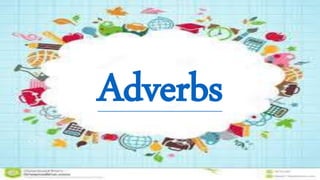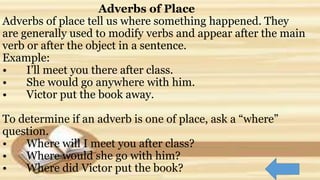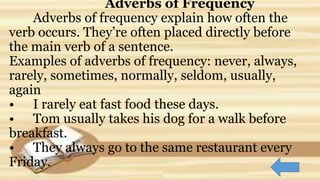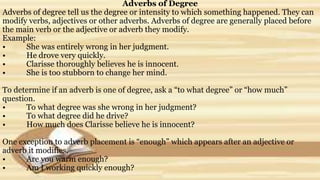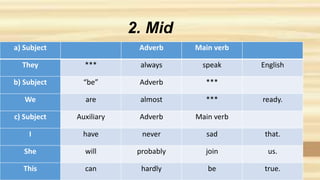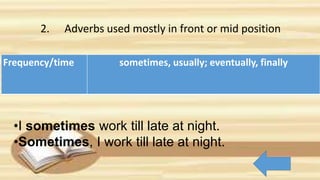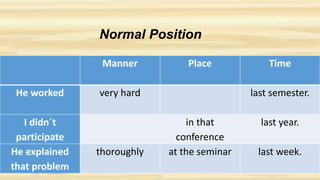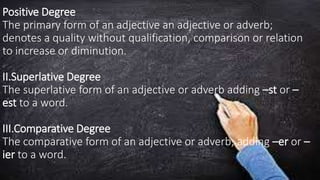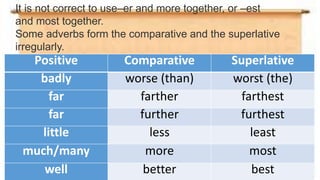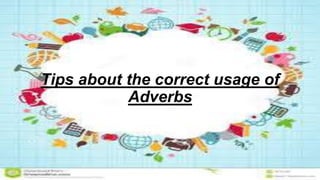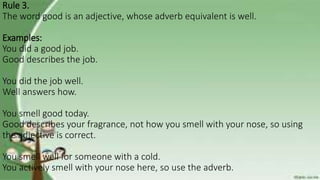An adverb is a word that modifies verbs, adjectives, or other adverbs. There are several types of adverbs including adverbs of manner, time, place, frequency, and degree. Adverbs can appear in different positions within a sentence, most commonly in the mid, front, or end position depending on the specific adverb. Conjunctive adverbs are used to connect clauses and show relationships such as sequence, contrast, and cause and effect.
